
Mount Field National Park: Tasmania's Natural Wonderland
Discover the diverse landscapes and rich biodiversity of Mount Field National Park, Tasmania's oldest national park, renowned for its stunning waterfalls and unique wildlife.
Mount Field National Park, one of Tasmania's oldest national parks, is a must-visit destination for nature lovers. The park offers a diverse range of landscapes, from lush rainforests to alpine moorlands. Its rich biodiversity means you'll encounter unique flora and fauna, including the famous Tasmanian devil. The park is home to some of Tasmania's most stunning waterfalls, such as Russell Falls and Horseshoe Falls. These cascading waters are accessible via well-maintained walking trails that cater to all fitness levels. In winter, the higher elevations of the park transform into a snowy wonderland, perfect for skiing and snowboarding enthusiasts. For those interested in hiking, Mount Field National Park offers a variety of trails. The Tarn Shelf walk is particularly popular, providing breathtaking views of glacial lakes and rugged mountain scenery. Wildlife sightings are common, so keep an eye out for wombats, pademelons, and a variety of bird species. The park also has excellent facilities for picnicking and camping, making it an ideal spot for a family outing or a weekend getaway. Whether you're an adventure seeker or someone looking to relax in nature, Mount Field National Park has something for everyone.
Local tips in Mount Field National Park
- Visit Russell Falls early in the morning to avoid the crowds and capture the best photographs.
- During winter, check the weather conditions before heading to the higher elevations for skiing.
- Wear sturdy walking shoes as some trails can be slippery, especially after rain.
- Bring a packed lunch and enjoy a picnic at one of the designated areas within the park.
- Don't forget your camera; the park's scenic beauty provides countless photo opportunities.
Mount Field National Park: Tasmania's Natural Wonderland
Mount Field National Park, one of Tasmania's oldest national parks, is a must-visit destination for nature lovers. The park offers a diverse range of landscapes, from lush rainforests to alpine moorlands. Its rich biodiversity means you'll encounter unique flora and fauna, including the famous Tasmanian devil. The park is home to some of Tasmania's most stunning waterfalls, such as Russell Falls and Horseshoe Falls. These cascading waters are accessible via well-maintained walking trails that cater to all fitness levels. In winter, the higher elevations of the park transform into a snowy wonderland, perfect for skiing and snowboarding enthusiasts. For those interested in hiking, Mount Field National Park offers a variety of trails. The Tarn Shelf walk is particularly popular, providing breathtaking views of glacial lakes and rugged mountain scenery. Wildlife sightings are common, so keep an eye out for wombats, pademelons, and a variety of bird species. The park also has excellent facilities for picnicking and camping, making it an ideal spot for a family outing or a weekend getaway. Whether you're an adventure seeker or someone looking to relax in nature, Mount Field National Park has something for everyone.
When is the best time to go to Mount Field National Park?
Iconic landmarks you can’t miss
Port Arthur Historic Site
Explore the Port Arthur Historic Site, a UNESCO World Heritage treasure showcasing Australia's convict history amidst breathtaking landscapes.

Russell Falls
Explore Russell Falls, a stunning three-tiered waterfall in Mount Field National Park, surrounded by breathtaking rainforest and diverse wildlife.

Beaconsfield Mine & Heritage Centre
Uncover Tasmania's mining history at Beaconsfield Mine & Heritage Centre, a unique museum experience with engaging exhibits and local gifts.
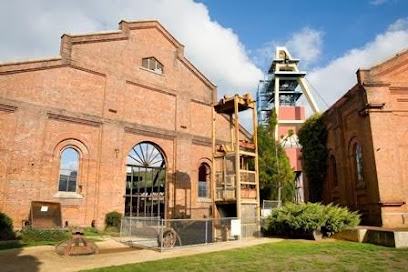
Remarkable Cave
Explore the breathtaking Remarkable Cave in Tasmania's Tasman National Park, where stunning rock formations meet the beauty of the coastline.

Mount Field Visitor Centre
Explore the breathtaking beauty of Mount Field National Park at the Mount Field Visitor Centre, your gateway to Tasmania's stunning landscapes and wildlife.
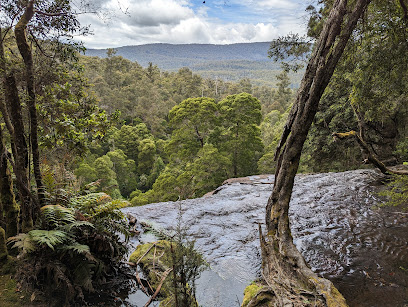
Uluṟu Coach Sunset Viewing Area
Discover the breathtaking sunsets at Uluṟu Coach Sunset Viewing Area, where nature's palette paints Uluru in stunning colors under the vast Australian sky.
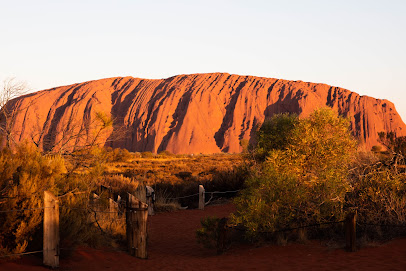
Mole Creek Caves
Uncover the wonders of Mole Creek Caves, a stunning natural attraction in Tasmania's National Park featuring breathtaking limestone formations and vibrant wildlife.

Nelson Falls
Explore the breathtaking Nelson Falls in Tasmania, where nature's beauty meets accessibility for an unforgettable outdoor experience.
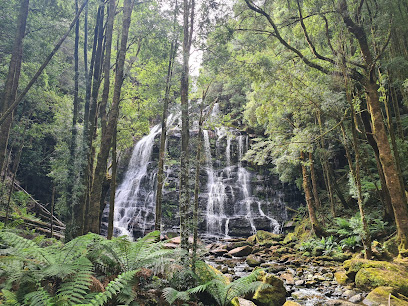
Tasman National Park
Discover the breathtaking natural beauty and diverse wildlife of Tasman National Park, a must-visit destination in Tasmania for nature lovers and adventure seekers.

Cradle Mountain Interpretation Centre & Ranger Station
Explore the Cradle Mountain Interpretation Centre & Ranger Station for a journey into Tasmania's stunning wilderness and diverse ecosystems.

Marakoopa Cave
Uncover the natural wonders of Marakoopa Cave in Tasmania's Mole Creek Karst National Park, featuring breathtaking limestone formations and enchanting glowworms.

Coal Mines Historic Site
Discover Tasmania's Coal Mines Historic Site: an enchanting blend of history and nature, showcasing the legacy of convict labor and stunning landscapes.

Maria Island National Park
Explore the breathtaking landscapes and rich wildlife of Maria Island National Park, a pristine escape in Tasmania's natural wonders.

Hartz Mountains National Park
Explore the breathtaking landscapes and diverse wildlife at Hartz Mountains National Park, a true gem of Tasmania's natural beauty.

Franklin-Gordon Wild Rivers National Park
Explore the pristine wilderness of Franklin-Gordon Wild Rivers National Park, a UNESCO World Heritage site offering breathtaking landscapes and outdoor adventures.

Unmissable attractions to see
Salmon Ponds and the Museum of Trout Fishing
Discover the serene beauty and rich history of trout fishing at Salmon Ponds, a must-visit attraction in Tasmania for nature lovers and fishing enthusiasts.

Mount Field Visitor Centre
Explore the breathtaking landscapes and rich biodiversity of Mount Field National Park at the Mount Field Visitor Centre in Tasmania.

Mount Field Visitor Centre
Explore the natural beauty of Tasmania at the Mount Field Visitor Centre, your gateway to stunning landscapes and unforgettable adventures.

Mawson's Huts Replica Museum
Explore the fascinating history of Antarctic exploration at Mawson's Huts Replica Museum in Hobart, where adventure meets education.

Westerway Raspberry Farm
Experience the joy of picking fresh raspberries at Westerway Raspberry Farm, Tasmania's charming destination for berry lovers and families.
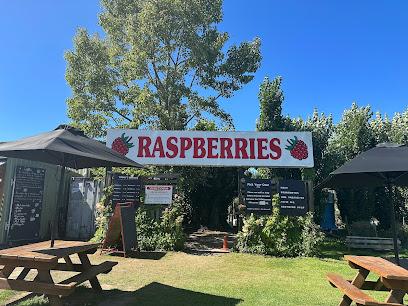
Hartz Mountains National Park
Explore the breathtaking Hartz Mountains National Park, a natural paradise in Tasmania known for its stunning landscapes, unique wildlife, and diverse hiking trails.

Franklin-Gordon Wild Rivers National Park
Discover the pristine wilderness of Franklin-Gordon Wild Rivers National Park, a UNESCO World Heritage site in Tasmania, showcasing diverse landscapes and rich wildlife.

Southwest National Park
Discover the unspoiled wilderness and breathtaking landscapes at Southwest National Park, a true gem of Tasmania's natural heritage.
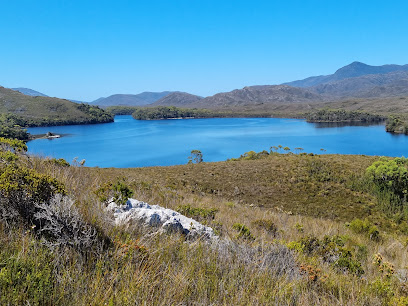
Snug Falls
Experience the breathtaking Snug Falls - a serene waterfall nestled in Tasmania's lush landscapes, perfect for hiking and nature lovers.
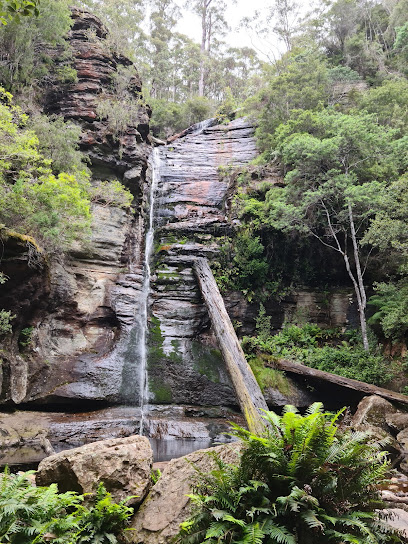
Waterworks Reserve
Explore Waterworks Reserve, a stunning nature preserve in Tasmania with scenic landscapes, diverse flora, and peaceful walking trails.

Pulpit Rock Lookout
Experience the breathtaking views of Derwent Valley at Pulpit Rock Lookout, a scenic gem in New Norfolk, Tasmania, perfect for nature lovers and photographers.

Strickland Falls
Explore the breathtaking beauty of Strickland Falls in South Hobart, Tasmania, where nature and tranquility converge for a perfect getaway.

O'Grady Falls
Experience the natural beauty of O'Grady Falls in Tasmania, a stunning waterfall surrounded by lush landscapes and breathtaking hiking trails.
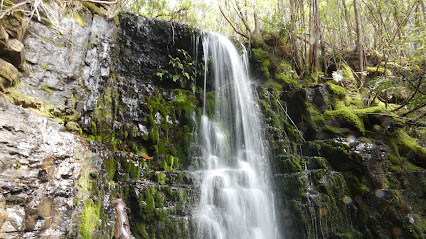
Lake Dobson
Discover the breathtaking beauty of Lake Dobson, a tranquil nature preserve in Mount Field, Tasmania, perfect for outdoor enthusiasts and nature lovers.
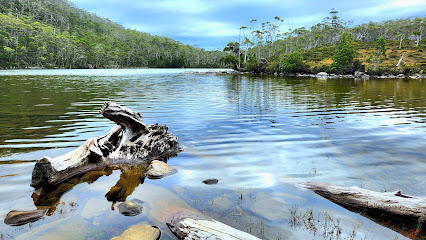
Lady Barron Falls
Explore the breathtaking beauty of Lady Barron Falls, a serene natural attraction in Tasmania's Mount Field National Park, perfect for nature lovers and photographers alike.

Essential places to dine
Cradle Mountain Wilderness Village
Discover the beauty of Tasmania at Cradle Mountain Wilderness Village - where luxury meets nature in breathtaking surroundings.

Hungry Wombat Cafe
Discover Hungry Wombat Cafe in Tasmania - where delicious food meets breathtaking scenery in a cozy setting perfect for travelers.
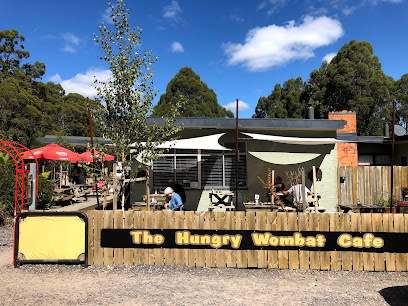
The Signal Station Restaurant
Experience Tasmanian flavors at The Signal Station Restaurant with stunning views and a cozy atmosphere perfect for any traveler.

The Possum Shed Cafe
Experience the charm of The Possum Shed Cafe with delightful coffee and homemade treats in Tasmania's stunning natural landscape.

Pedder Wilderness Lodge (Open 11am-3pm)
Experience unparalleled tranquility at Pedder Wilderness Lodge amidst Tasmania's breathtaking landscapes and adventure-filled activities.

The Agrarian Kitchen
Discover seasonal delights at The Agrarian Kitchen in New Norfolk—where local produce meets culinary creativity amidst beautiful gardens.

National Park Hotel
Discover comfort and local flavors at National Park Hotel - your gateway to Tasmania's breathtaking landscapes.

Giants' Table and Cottages
Discover tranquility at Giants' Table and Cottages in Maydena - your gateway to Tasmania's natural wonders.

Fika Time Cafe/Restaurant & General Store
Discover cozy comfort at Fika Time Cafe in Maydena - your perfect stop for coffee, meals, and local treasures amidst Tasmania's beauty.

Waterfalls Cafe and Gallery
Experience culinary delights and local artistry at Waterfalls Cafe & Gallery near Mount Field National Park.

Linda Cafe
Discover Linda Cafe in Gormanston - where delightful flavors meet stunning Tasmanian landscapes.

Highland Restaurant
Experience exquisite modern Australian cuisine surrounded by breathtaking landscapes at Highland Restaurant in Cradle Mountain.

River Run Lodge & Tavern
Discover serenity at River Run Lodge & Tavern - your perfect getaway in Strathblane, Tasmania with great food and stunning views.

Russell Falls Holiday Cottages
Experience the serene beauty of Tasmania at Russell Falls Holiday Cottages—your gateway to nature's wonders in Mt. Field National Park.

Mount Field Government Huts
Experience the natural beauty of Tasmania at Mount Field Government Huts - your gateway to adventure and tranquility.
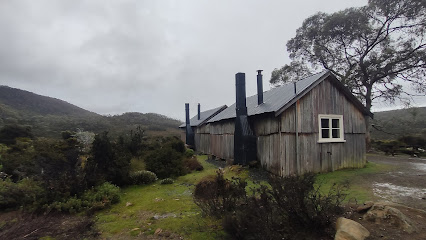
Markets, malls and hidden boutiques
Mount Field National Park
Explore the stunning landscapes and rich biodiversity of Mount Field National Park, a breathtaking haven for nature lovers in Tasmania.

Mount Field Visitor Centre
Discover the natural beauty and rich biodiversity of Mount Field National Park at the Mount Field Visitor Centre, your gateway to adventure in Tasmania.

The Possum Shed Cafe
Discover the warmth of The Possum Shed Cafe in Tasmania, where delicious coffee meets stunning natural beauty in a cozy atmosphere.

Waterfalls Cafe and Gallery
Experience the perfect blend of art, coffee, and local culture at Waterfalls Cafe and Gallery in the heart of Mount Field, Tasmania.

Willow Court Antique Centre
Uncover unique antiques and vintage collectibles in the heart of Tasmania at Willow Court Antique Centre, a treasure trove for history enthusiasts.

Raspberry Lane Boutique
Discover unique gifts and charming children's items at Raspberry Lane Boutique in Moonah, Tasmania - a perfect stop for families and gift seekers.

IGA X-Press Ouse
Experience the local flavors and friendly service at IGA X-Press Ouse, your go-to grocery store in Tasmania.

Padmalight
Explore Padmalight in Hobart: A unique gift shop offering local crafts and books, perfect for finding special souvenirs from Tasmania.

Flywheel
Explore Flywheel in New Norfolk, Tasmania, a delightful stationery store offering a unique selection of writing supplies and creative gifts.
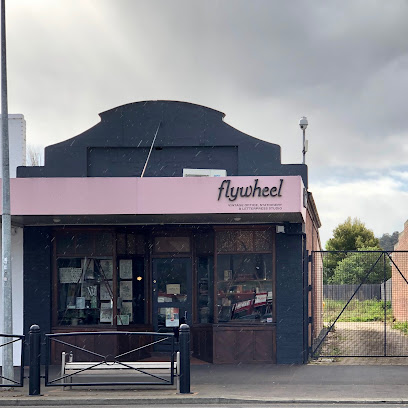
20th Century Artifacts
Explore a captivating collection of vintage treasures at 20th Century Artifacts in New Norfolk, Tasmania—where history meets charm.

The Big Tasmanian Rock Shop
Discover unique geological treasures and handcrafted gifts at The Big Tasmanian Rock Shop in New Norfolk, Tasmania.
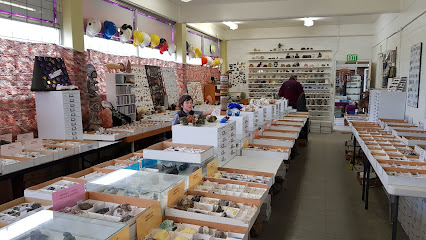
Oli's Garage Sale
Explore Oli's Garage Sale in New Norfolk, Tasmania, for a unique shopping experience filled with antiques, collectibles, and hidden treasures.

Ring Road Antique Centre
Explore the enchanting Ring Road Antique Centre in New Norfolk, Tasmania, where timeless treasures and unique vintage finds await every visitor.

Drill Hall Emporium
Explore the Drill Hall Emporium, a captivating antique store in New Norfolk, Tasmania, where history and unique treasures await every visitor.
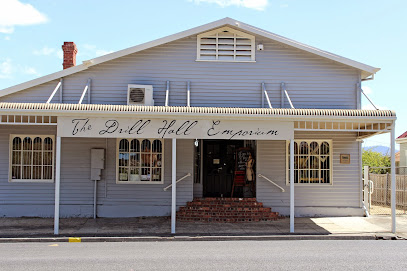
CWA Gift Shop
Explore the CWA Gift Shop in Hobart for authentic Tasmanian crafts and delicacies, where every purchase supports local artisans and communities.

Essential bars & hidden hideouts
In The Hanging Garden
Experience the vibrant atmosphere of In The Hanging Garden, a bar and restaurant in Hobart offering delicious cuisine and live music.

The Den Salamanca
Experience the vibrant nightlife of Hobart at The Den Salamanca, a cocktail bar offering exquisite drinks and delicious dining in a lively atmosphere.

Pub in the Paddock
Discover the charm of rural Tasmania at the Pub in the Paddock, where hearty meals and local brews meet stunning countryside views.

The Possum Shed Cafe
Experience the warmth and flavor of The Possum Shed Cafe, a delightful retreat in Tasmania offering exceptional coffee and homemade treats.
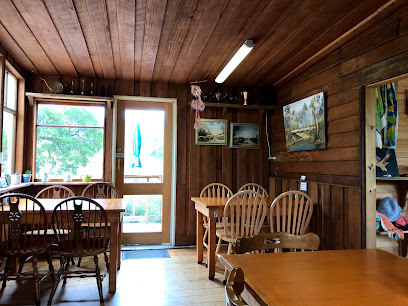
The Kentish Tasmania
Delight in authentic Tasmanian cuisine and warm hospitality at The Kentish Tasmania, your ideal pub and restaurant in Oatlands.

Evolve Spirits Bar
Discover Evolve Spirits Bar in Hobart, where unique decor meets an exquisite selection of local and international spirits.

Giants' Table and Cottages
Discover the perfect blend of rustic charm and culinary delight at Giants' Table and Cottages in Tasmania's breathtaking landscapes.

IXL Long Bar
Discover Hobart's IXL Long Bar, where exquisite cocktails meet vibrant live music in a stunning historic setting.
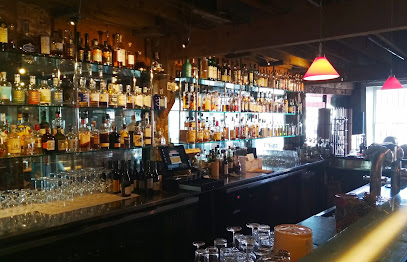
Waterfalls Cafe and Gallery
Experience the perfect blend of culinary delights and artistic inspiration at Waterfalls Cafe and Gallery in Tasmania's Mount Field National Park.

Lachlan Hotel
Experience the charm of Tasmania at Lachlan Hotel, a picturesque pub and hotel offering delicious food, local drinks, and comfortable accommodations.

Mary Mary
Discover an unforgettable cocktail experience at Mary Mary in Hobart, where innovative drinks and a vibrant atmosphere await.

The Story Bar
Experience the vibrant nightlife of Hobart at The Story Bar, where creative cocktails and local wines meet a warm, inviting atmosphere.

Uni Bar
Experience the lively atmosphere and diverse drink offerings at Uni Bar, Sandy Bay's premier social hub for locals and travelers alike.

Manky Sally's
Discover Manky Sally's: A vibrant bar and brewery in Battery Point, Tasmania, offering craft beers, delicious meals, and a cozy atmosphere.

Gin(bar) by Forty Spotted
Explore Tasmania's finest gins in a sophisticated yet relaxed setting at Gin(bar) by Forty Spotted in Hobart.

Local Phrases about Mount Field National Park
-
- HelloG'day
[g'day] - GoodbyeSee ya
[see ya] - YesYeah
[yeah] - NoNah
[nah] - Please/You're welcomeNo worries
[no worries] - Thank youCheers
[cheers] - Excuse me/SorrySorry mate
[sorry mate] - How are you?How ya going?
[how ya going] - Fine. And you?Good thanks. You?
[good thanks. you] - Do you speak English?You speak English?
[you speak English] - I don't understandI'm lost mate
[I'm lost mate]
- HelloG'day
-
- I'd like to see the menu, pleaseMenu please
[menu please] - I don't eat meatNo meat for me
[no meat for me] - Cheers!Cheers!
[cheers] - I would like to pay, pleaseBill please
[bill please]
- I'd like to see the menu, pleaseMenu please
-
- Help!Help!
[help] - Go away!Bugger off!
[bugger off] - Call the Police!Get the cops!
[get the cops] - Call a doctor!Get a doc!
[get a doc] - I'm lostLost mate
[lost mate] - I'm illNot feeling well
[not feeling well]
- Help!Help!
-
- I'd like to buy...I'll take that
[I'll take that] - I'm just lookingJust looking
[just looking] - How much is it?How much?
[how much] - That's too expensiveToo dear mate
[too dear mate] - Can you lower the price?Can you do a deal?
[can you do a deal]
- I'd like to buy...I'll take that
-
- What time is it?What's the time?
[what's the time] - It's one o'clockIt's one
[it's one] - Half past (10)Half past ten
[half past ten] - MorningMorning
[morning] - AfternoonArvo
[arvo] - EveningEvening
[evening] - YesterdayYesterday
[yesterday] - TodayToday
[today] - TomorrowTomorrow
[tomorrow] - 1One
[one] - 2Two
[two] - 3Three
[three] - 4Four
[four] - 5Five
[five] - 6Six
[six] - 7Seven
[seven] - 8Eight
[eight] - 9Nine
[nine] - 10Ten
[ten]
- What time is it?What's the time?
-
- Where's a/the...?Where's the...?
[where's the] - What's the address?What's the address?
[what's the address] - Can you show me (on the map)?Show me on the map
[show me on the map] - When's the next (bus)?When's the next bus?
[when's the next bus] - A ticket (to ....)Ticket to ...
[ticket to]
- Where's a/the...?Where's the...?
History of Mount Field National Park
-
Mount Field National Park sits on the land traditionally owned by the Aboriginal people, specifically the Big River and Oyster Bay tribes. These indigenous communities have a rich history and deep connection to the land, relying on its resources for food, shelter, and cultural practices. Evidence of their presence is found in the form of rock shelters and tool-making sites within the park.
-
The first European to explore the area of Mount Field was surveyor James Sprent in the 1840s. His detailed observations and maps laid the groundwork for future exploration and settlement. By the late 19th century, European settlers began to exploit the region's natural resources, particularly timber, which led to increased interest in the area's conservation.
-
Mount Field was officially declared a national park in 1916, making it one of the oldest national parks in Tasmania. The park was established to protect its unique flora and fauna, including the tall swamp gums and the iconic Tasmanian devil. This move was driven by the growing conservation movement and the recognition of the area's ecological significance.
-
Russell Falls, one of the park's most iconic landmarks, was named after the local settler, Russell, who discovered it in the 1850s. The falls quickly became a popular tourist attraction, even before the park's official establishment. The construction of walking tracks in the early 20th century made the falls more accessible, cementing its status as a must-visit destination within the park.
-
During World War II, Mount Field National Park served as a site for military training exercises. The rugged terrain and dense forests provided an ideal setting for soldiers to practice maneuvers and survival skills. This period left a lasting impact on the park, with some trails and structures dating back to this era still visible today.
-
In recent decades, Mount Field National Park has seen significant conservation efforts aimed at protecting its unique ecosystems. The establishment of visitor centers, improved walking tracks, and educational programs have all contributed to the park's mission of preserving its natural beauty while enhancing the visitor experience. Modern developments have also focused on sustainable tourism, ensuring that the park remains a pristine natural sanctuary for future generations.
Mount Field National Park Essentials
-
Mount Field National Park is located in Tasmania, Australia. The nearest major city is Hobart, which is approximately 64 kilometers away. From Hobart, you can drive to the park via the A10 highway, a journey that typically takes around 1.5 hours. Alternatively, you can join a guided tour that includes transportation or arrange for a private transfer service. Public transportation options are limited, so renting a car may offer the most flexibility.
-
Within Mount Field National Park, the best way to explore is by foot, as there are numerous well-marked hiking trails. For those with limited mobility or who prefer not to hike, there are some scenic drives and lookout points accessible by car. There are no public transportation services operating within the park itself, so having your own vehicle or arranging for transport in advance is essential.
-
The official currency in Australia is the Australian Dollar (AUD). Credit and debit cards are widely accepted in Hobart and the surrounding areas. However, it is advisable to carry some cash for use in smaller shops, cafes, and for park entry fees. ATMs are available in Hobart and other nearby towns, but there are no ATMs within Mount Field National Park itself.
-
Mount Field National Park is generally very safe for visitors. However, standard safety precautions should still be observed. Be mindful of your belongings, especially in parking areas and popular tourist spots. Watch out for wildlife, and always stay on marked trails to avoid getting lost. There are no specific high-crime areas targeting tourists within the park.
-
In case of an emergency, dial 000 for police, fire, or medical assistance. Mobile phone reception can be limited in certain areas of the park, so it is advisable to inform someone of your plans before heading out. The nearest medical facilities are in New Norfolk, approximately 30 kilometers from the park. Carrying a basic first aid kit and knowing some first aid can also be helpful.
-
Fashion: Do wear comfortable, weather-appropriate clothing and sturdy hiking boots. Layering is recommended due to changing weather conditions. Religion: There are no specific religious customs to observe, but always be respectful of any cultural or historical sites. Public Transport: Public transport options directly to the park are limited, so plan accordingly. Greetings: A friendly 'hello' or 'g'day' is common. Eating & Drinking: Do bring your own food and water, as facilities are limited. Don't leave any litter; always use designated bins or take your rubbish with you.
-
To experience Mount Field National Park like a local, start your visit early in the morning to avoid crowds and see wildlife. The Russell Falls walk is a must-see, and if you're up for a challenge, tackle the longer Lake Dobson circuit. Pack a picnic and enjoy it at one of the many scenic spots. Also, consider visiting during different seasons to experience the park's diverse landscapes, from snow-capped peaks in winter to vibrant autumn foliage.
Trending Landmarks in Mount Field National Park
-
Port Arthur Historic Site
-
Russell Falls
-
Beaconsfield Mine & Heritage Centre
-
Remarkable Cave
-
Mount Field Visitor Centre
-
Uluṟu Coach Sunset Viewing Area
-
Mole Creek Caves
-
Nelson Falls
-
Tasman National Park
-
Cradle Mountain Interpretation Centre & Ranger Station
-
Marakoopa Cave
-
Coal Mines Historic Site
-
Maria Island National Park
-
Hartz Mountains National Park
-
Franklin-Gordon Wild Rivers National Park
Nearby Cities to Mount Field National Park
-
Things To Do in Melbourne
-
Things To Do in Canberra
-
Things To Do in Sydney
-
Things To Do in Adelaide
-
Things To Do in Kangaroo Island
-
Things To Do in Byron Bay
-
Things To Do in Gold Coast
-
Things To Do in Surfers Paradise
-
Things To Do in Invercargill
-
Things To Do in Queenstown
-
Things To Do in Brisbane
-
Things To Do in Wanaka
-
Things To Do in Noosa
-
Things To Do in Dunedin
-
Things To Do in Timaru










